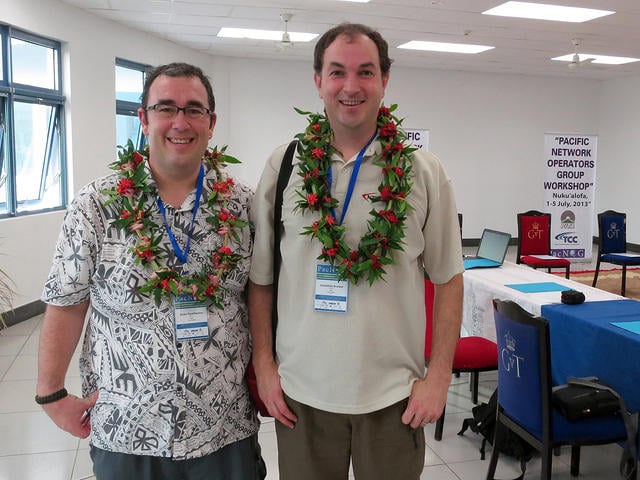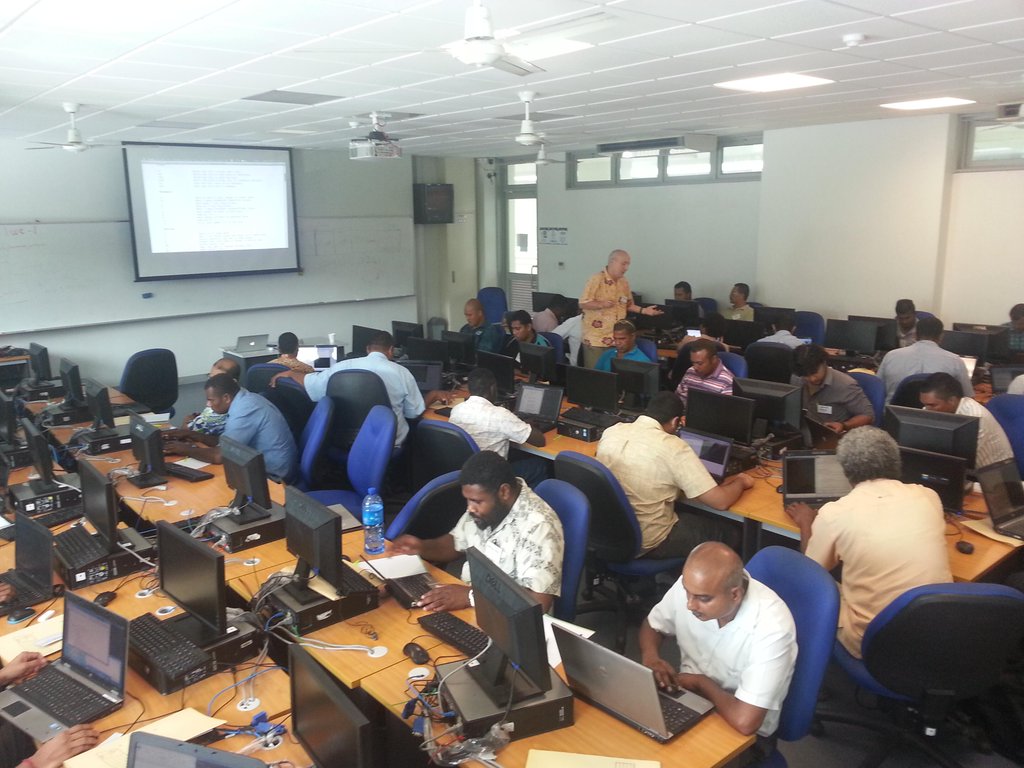
For the final post in this series, we return to the idea that the Internet is not just helping New Zealand to retain talent but is helping it attract talent to its shores. Indeed, the talent that it has attracted is helping to not only develop the future of the Internet in the country, but also the Internet in the Pacific.
Today we talk with Jon Brewer, a consulting network engineer, technical architect and trainer in an official sense; but by his own admission, a curious builder.
Having worked for an ISP and a big pharma company in the USA, tinkering with wireless technology and developing applications, Jon immigrated to Wellington, New Zealand, in 2003 to undertake a Masters Degree in Information Management at Victoria University.
“I picked Wellington because of the CityLink network, which was quite famous at the time,” remembers Jon.
CityLink network inspires a career in wireless
The story of CityLink is well known in New Zealand and most of the world’s networking community. Starting out in 1995, it was an initiative of the Wellington City Council to deploy a low-cost yet advanced communications network to give a competitive edge to government enterprises and local businesses. The network comprised fibre-optic cables, which were run along the overhead lines used by the city trolley buses within the Wellington CBD. The concept was visionary for the time—making the city one of the best connected in the world—except for one rather frustrating oversight by Jon’s account.
“I moved into a dormitory on a street that had a CityLink cable running along it, but we couldn’t get it connected to the building because of a resource management act that required all resource connections [electricity and telephone lines] to be connected to buildings only via underground,” explains Jon. “Obviously, this was frustrating. Instead of connecting to this 100MB/s network which was only metres away, 300 of us living in the dormitory had to rely on a 2MB/s connection via the local telco.”
Acting on this frustration, Jon contacted CityLink founder, Richard Naylor, who suggested he could connect to the network using a Wi-Fi link. This suggestion turned out to be a major influence on Jon’s career: first provoking a curiosity in wireless technology; and within a year, the foundation of Araneo Wireless Solutions, a company that started out solving the problem of getting fibre optic cable into buildings.
“Everyone looked at the organizations we were connecting to the CityLink and said ‘Wow! They just increased their Internet capacity by five times at the cost of $500 a month, when we’re paying a few thousand dollars a month for our 2MB/s links.’ After that, it really took off and shortly afterwards we became the major provider of open access wireless and microwave technology used by most of the country’s telecommunications carriers.”
Connecting regional NZ to broadband
Following on from his success in the city, Jon turned his attention to regional New Zealand, where he sought to bring the benefits of fibre optic cabling and wholesale access networks to locations that didn’t have the infrastructure.
“The first of our big projects in this field was to help the National Library’s Aotearoa People’s Network connect to twenty or so rural libraries where they couldn’t get reliable fixed broadband service,” says Jon, adding that the network has now grown to include over 140 libraries.
“After that, we moved onto replacing a satellite network for New Zealand’s biggest farmer, Landcorp, which is owned by the government. During this project, we brought out symmetric broadband to around 100 remote stations.”
Jon continued this line of regional work for seven years, selling his company in 2011 to return to doing consulting and, later on, network engineer training.
Developing capacity in the Pacific to help them retain talent
In 2013, Jon was contracted by the University of Oregon’s Network Startup Resource Center (NSRC) to fill in for one of their regular trainers, Andy Linton, as a facilitator for a TCP/IP Fundamentals and Linux System Administration workshop that they were running in Tonga, as part of a Pacific Network Operators Group meeting.
“I’d never run a technical workshop before then, but Andy asked me to do it because I’d had experience in building wholesale access networks, and developing remote connectivity in some pretty difficult environments.
“It was a great experience which led to further activities, to the point that development activities now consume a third of my time.”
Jon admits that his development activities have allowed him to travel to diverse places to meet interesting people, and he gets to do something that he really likes, which is building networks. But it’s the underlying importance of providing the right sort of capacity development in these less developed nations that continually has Jon coming back for more.
“There’s been a history in Asia Pacific of ‘let’s give these guys a pile of money and they’ll come in and build us a network to their standards’, after which they’ll disappear. This is all ok until it’s time to update the infrastructure and you can’t do that without spending lots of money getting your vendor back because you’re locked into a particular technology and don’t have the in-country capacity.”
“What we try to convey is that there are inexpensive open-sourced solutions that can work for their countries. The open-source and network monitoring systems that we teach are low-cost, robust, wireless/microwave systems, based on Linux.”
“If you look at all the biggest companies in the world like Facebook, Google and Yahoo, they’re all using the same open-sourced, Linux-based system – it’s only the old school telco world that is hung up on proprietary technologies.”
“For me, capacity development is about getting the knowledge of the largest companies in the world – those that are doing really smart, really inexpensive things – into the hands of the smallest networks in the world.”
Over the past year, Jon has broadened his development work to include an ISIF Asia-funded research project that seeks to work with network operators and leaders in Pacific telecommunications to interconnect with each other.
“The end goal is to get them to realize that if they work together to share and pool resources instead of going to their old vendors, then they will start to become cost effective and will create an environment that can sustain a larger community of local network operators and experts who are readily on hand.”
The views expressed by the authors of this blog are their own and do not necessarily reflect the views of APNIC. Please note a Code of Conduct applies to this blog.




